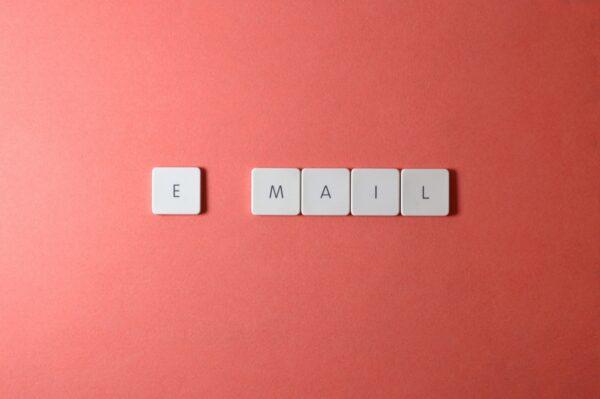When it comes to email, don’t believe the hype that it’s an antiquated communication medium. Case in point? By the end of 2025, email users will balloon to 4.6 billion users!
What’s more, email will continue to dominate as the primary way to connect in the business world. But, at the same time, managing our inboxes can be time-consuming and frustrating even though it’s necessary. And there’s also the possibility that AI is filtering out important messages that will end up being flagged as spam.
As a result, it’s worth spending some time fine-tuning our email skills. By doing so, you should be able to improve engagement, which will lead to more opens and clicks. And it will help make sure that the email gets delivered to the right inbox.
1. Use a Captivating Subject Line
In the business world, it’s widely accepted that subject lines can make or break your emails. It’s been found that 47 percent of email recipients open an email based on the subject line alone. But, what makes a powerful subject line?In short, it should provide a clear, direct, and detailed description of your email’s content. Jeff Su also suggests that your subject line should include a call to action when necessary.
“Most of us are familiar with a generic ‘action required’ in subject lines, right?” he asks in HBR. “My recommendation is just to take it a step further and include exactly what you need the recipient to do, and the estimated time it takes for them to do it.”
“For example, instead of writing ‘Action required, feedback for project X,’ write ‘Five minutes—survey feedback for project X,’ instead,” Su advises. Using this very simple trick will help give more context to the recipient. In this case, they were asked to fill out a survey quickly.
“Or if it’s not appropriate to include the estimated time, be specific about the call to action,” he adds. “For example, instead of ‘spending estimates for Q4,’ write ‘Elon to approve spending estimates for Q4.'” This lets Elon know what to expect even before he opens the email.
Another trick you can try? Use song or movie titles. According to Retention Science, using movie titles and song lyrics as subject lines results in an average open rate of 26 percent.

2. Greet the Recipient Appropriately
You set the tone of your email with its opening. Also, if you’re contacting someone for the first time, how you start the message can influence their first impression of you. Unfortunately, most people overlook this stop.So, how then should I start my email? That depends.
Before going any further, you should know that a greeting consists of two parts. The first is the salutation. And the second is the opening sentence.
When it comes to salutations, these are based on the particular situation. For example, it’s better to begin an email with “Dear [X]” for more formal messages, like when contacting a bank or government institution.
In the case of an email to a coworker or a casual setting, you can go ahead and use something like “Hello [name]” or “Hi [name].”
There’s also “To Whom It May Concern,” in case you’re not sure who will read the email when you’re sending it to a group. Also, in your salutation, be careful not to use gendered and non-inclusive terms such as “Hi guys” and “Mr./Ms./Mrs.
- Dear [First Name]
- [Name]
- Good morning/afternoon
- Hey
- Hi everyone
3. Grab (and Hold) Their Attention
Now that the salutation is out of the way, you can start composing your email.Sure. You can determine whether your subject line opens your email. But, whether it is read all the way to the end depends on your opening sentence.
For introductions, you might kick things off with something you know will draw the recipient’s attention. For example, if you have a mutual acquaintance, you could ask them what the recipient likes. If you don’t have a common contact, do a little digging by checking out their social media accounts.
4. Avoid the “Wall of Text”
What separates the best emails from the rest? First, they don’t use flowery language. Joanna Cutrara, a writing coach in the Bay Area, believes writers should make their purpose clear as quickly as possible. When possible, she said, keep emails to five sentences or fewer, and paragraphs to three sentences or less.“If you’re writing an email that you would dread reading, why are you sending it?” she said.
If you must send longer emails, make sure to format them correctly. When necessary, Seth Serhienko, CPA, suggests using bold lettering, bullets, or numbered lists. This way, if your readers are scanning your message, these cues can be valuable.
5. Make a Clear Call of Action
Whether you included a call to action in your subject line or not, make sure that you have one in the body of your email. The reason is that your receipt isn’t a mind reader. So unless you tell the recipient what to do next, they won’t know how to proceed.You should provide clear instructions when you ask for something, for instance. So, if you’d like an interview invitation, specify that. Or, even better, attach your calendar so that they can select an available time slot that also works for them. Then, if you need a response by a particular date, let them know when you need a reply.
- Details and dates should be provided
- Paragraphs should consist of single sentences
- Complicated requests should be broken down into steps
- It’s okay to use bold when needed

6. Provide If-Then Options
Sometimes there may be multiple ways of providing information or outcomes. In these situations, list all the options you know are possible for the recipient.7. Write the Kind of Email that People Look forward to Reading
A professional typically receives 120 new emails a day and has more than 200 emails in their inbox, but only responds to 25 percent of them. So I’m sure it’s no surprise that there are a lot of emails we ignore.Even if you’ve done all of the above, that doesn’t mean people are excited to receive, let alone read, your message. So, why not give them something to look forward to?
- Every email should include one “big idea.”
- Use statements, as opposed to open-ended questions
- Be surprisingly generous
- Be respectful and specific when delivering criticism
- Display your humanity
- When possible, include a compliment in your email, not just demand or request.
- If at all possible, close with the most beautiful words you can conjure

8. Schedule your emails
Approximately 54 percent of Americans check their work email within an hour after waking up, according to a 2020 survey by Sleep Advisor.The State of Email Engagement in the United States in 2021 is also consistent with this finding. Emails are most frequently read in the morning, according to the report. Open rates begin around 6 a.m. and usually peak between 9 a.m. and noon.
As a result, you have two options. First, send the email bright and early. Or, try to wait until they have more time to go through their inbox—which can be few and far between.
If you send your email first thing in the morning, it might get lost in the shuffle. However, waiting until a later time may prevent your email from being completely dismissed.
9. Do One Final Proofread
There’s nothing wrong with the small, occasional mistake for informal emails. If you struggle with perfectionism, this could be a way to curb this. But, at the same time, these errors could cause misunderstandings, like mixing up the start time of a meeting. And, for professional correspondence, this could harm your reputation.10. End Your Email on a High Note
To become a better email writer, you need to constantly add tools to your toolbox. One such tool is the closing sentence at the end of your message. In addition to demonstrating your appreciation and setting expectations, these closing phrases can be used to express your commitment to lending a hand.- I appreciate your help/assistance/support/time
- I look forward to hearing back from you
- Please contact me if I can assist in any way





